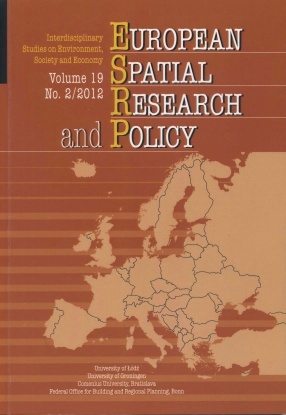Urban Regeneration in a ‘City of Culture’ the Case of Pécs, Hungary
DOI:
https://doi.org/10.2478/v10105-012-0017-4Keywords:
city of culture, urban planning, structural change, revitalisation of city, development strategy, funding-oriented planningAbstract
The development of Pécs is essentially due to its historically central location and to the fact that the regional institutions and the revenues generated by them have enriched the city. This functional wealth elevated the city to a position above the surrounding settlements. In its development, culture has always played a significant role. From the second half of the 19th century, it was industrial development which contributed most to its growth, a trend which was reversed at the end of the 20th century. The crisis arrived with the transition in the 1980s and has so far not been resolved. The city once more based its growth concept on human capital and on the cultural tradition when formulating new development strategy, and, as a result, it won the title of European Capital of Culture 2010. However, market processes and EU development funds necessarily generate trends which are rather more global, and in the post-socialist cities there are insufficient funds for endogenous development based on local factors to be realised.
Downloads
References
ALBRECTS, L. (2004), ‘Strategic (Spatial) Planning Re-examined’, Environment and Planning B: Planning and Design, 31, pp. 743–758.
Google Scholar
ALBRECTS, L., HEALY, P. and KUNZMANN, K. R. (2003), ‘Strategic Spatial Planning and Regional Governance in Europe’, Journal of American Planning Association, 69 (2), pp. 113–129.
Google Scholar
BOLAND, P. (2010), ‘“Capital of Culture – You Must Be Having a Laugh!” Challenging the Official Rhetoric of Liverpool as the 2008 European Cultural Capital’, Social and Cultural Geography, 11 (7), pp. 627–645.
Google Scholar
ESPON (2005), 1.1.1: Potentials for Polycentric Development in Europe. Final Report (NORDREGIO).
Google Scholar
EUROPEAN COMMISSION (2004), European Cities and Capitals of Culture, Brussels: Palmer-Rae Associates, http://ec.europa.eu/culture/pdf/doc654_en.pdf
Google Scholar
FARAGÓ, L. (2004), ‘The General Theory of Public (Spatial) Planning. The Social Technique for Creating the Future’, Discussion Papers, 43, Pécs: Centre for Regional Studies of Hungarian Academy of Sciences.
Google Scholar
FARAGÓ, L. (2005), ‘The Driving Forces of Regionalism in Hungary’, [in:] BARTA, Gy., FEKETE, É. G., SZÖRÉNYINÉ, I. K. and TIMÁR, J. (eds.), Hungarian Spaces and Places: Patterns of Transition, Pécs: Centre for Regional Studies, pp. 73–91.
Google Scholar
HABERMAS, J. (1986), ‘Magyarázatok a kommunikatív cselekvés fogalmához’ (Explanations to the concept of communicative action), Magyar Filozófiai Szemle, 30 (1–2), pp. 175–200.
Google Scholar
HABERMAS, J. (1995), The Theory of Communicative Action, Cambridge: Polity Press.
Google Scholar
HEALEY, P. (1997), Collaborative Planning, London: Macmillan.
Google Scholar
MINTZBERG, H. (1990), ‘Strategy Formation. Schools of Thought’, [in:] FREDRIKSON, J. W. (ed.), Perspectives on Strategic Management, New York: Harper Business, pp. 105–235.
Google Scholar
PÉCS (2005), The Pole of Quality of Life, Pécs: Local Government.
Google Scholar
SADIQ, K., WALKER, H., HUTTON, S. and ARTIS, H. (eds.), (2003), European Capital of Culture 2008. Socio-Economic Impact Assessment of Liverpool’s Bid, Manchester: ERM Economics.
Google Scholar
THE BORDERLESS CITY (2005), European Capital of Culture – Pécs 2010, Pécs: Europe Centre Pbc., www.pecs2010.hu.
Google Scholar
Downloads
Published
How to Cite
Issue
Section
License

This work is licensed under a Creative Commons Attribution-NonCommercial-NoDerivatives 4.0 International License.














